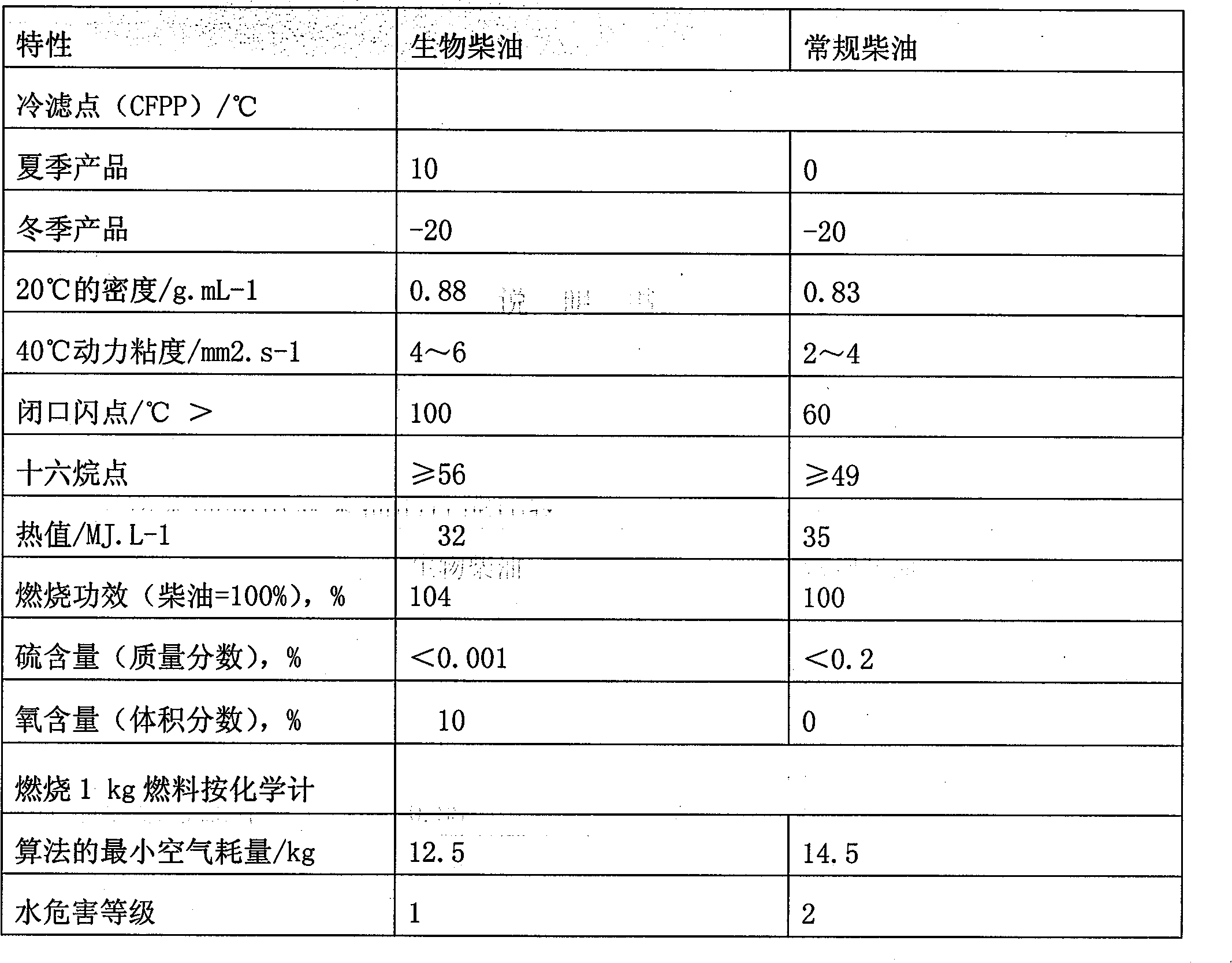Method for preparing biodiesel by ester exchange
A biodiesel and transesterification technology, which is applied in the preparation of biological raw materials, biofuels, and liquid hydrocarbon mixtures, can solve problems such as photochemical pollution, air pollution, and energy shortages, and achieve high biodegradability, extended service life, and good Effect of low temperature engine start performance
- Summary
- Abstract
- Description
- Claims
- Application Information
AI Technical Summary
Problems solved by technology
Method used
Image
Examples
Embodiment 1
[0020] The method for preparing biodiesel by transesterification of the present invention is to make through the following steps:
[0021] a. Animal oil, methanol, and catalyst are mixed in a molar ratio of 9:0.7:0.035;
[0022] b. Heating the mixture obtained in step a to 150°C for reaction, the reaction pressure is 0.7MPa, and the reaction time is 20 minutes;
[0023] c, distilling and separating the reactants obtained in step b to obtain crude glycerin, methanol and crude biodiesel;
[0024] d, re-distilling the biodiesel obtained in step c, and controlling the temperature at 150° C., to obtain biodiesel and by-product residue;
[0025] Described catalyst is ionic liquid catalyst R + -(CH 2 ) n -SO 3 - Ionic liquid, wherein, R is pyridine, methylimidazole or triethylamine; n is a carbon chain CH 2 number; the animal oil is lard, or tallow, or suet.
Embodiment 2
[0027] The method for preparing biodiesel by transesterification of the present invention is characterized in that it is prepared through the following steps:
[0028] a. Grease, methanol, and catalyst are mixed in a molar ratio of 15:1.3:0.5;
[0029] b. Heating the mixture obtained in step a to 190°C for reaction, the reaction pressure is 1.3MPa, and the reaction time is 40 minutes;
[0030] c, distilling and separating the reactants obtained in step b to obtain crude glycerin, methanol and crude biodiesel;
[0031] d. Re-distilling the biodiesel obtained in step c, and controlling the temperature at 190° C. to obtain biodiesel and by-product residue;
[0032] Described catalyst is ionic liquid catalyst R + -(CH 2 ) n -SO 3 - Ionic liquid, wherein, R is pyridine, methylimidazole or triethylamine; n is a carbon chain CH 2 number.
Embodiment 3
[0034] The method for preparing biodiesel by transesterification of the present invention is characterized in that it is prepared through the following steps:
[0035] a. Vegetable oil, methanol, and catalyst are mixed in a molar ratio of 12:1:0.042;
[0036] b. Heating the mixture obtained in step a to 170° C. for reaction, the reaction pressure is 1.0 MPa, and the reaction time is 30 minutes;
[0037] c, distilling and separating the reactants obtained in step b to obtain crude glycerin, methanol and crude biodiesel;
[0038] d. Re-distilling the biodiesel obtained in step c, and controlling the temperature at 170° C. to obtain biodiesel and by-product residue;
[0039] Described catalyst is ionic liquid catalyst R + -(CH 2 ) n -SO 3 - Ionic liquid, wherein, R is pyridine, methylimidazole or triethylamine; n is a carbon chain CH 2 number; the vegetable oil is castor oil, or rapeseed oil, or soybean oil.
[0040] The method for preparing biodiesel by transesterificati...
PUM
 Login to View More
Login to View More Abstract
Description
Claims
Application Information
 Login to View More
Login to View More - R&D
- Intellectual Property
- Life Sciences
- Materials
- Tech Scout
- Unparalleled Data Quality
- Higher Quality Content
- 60% Fewer Hallucinations
Browse by: Latest US Patents, China's latest patents, Technical Efficacy Thesaurus, Application Domain, Technology Topic, Popular Technical Reports.
© 2025 PatSnap. All rights reserved.Legal|Privacy policy|Modern Slavery Act Transparency Statement|Sitemap|About US| Contact US: help@patsnap.com


